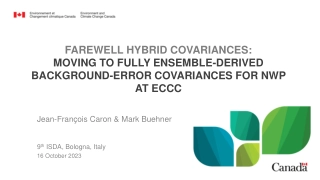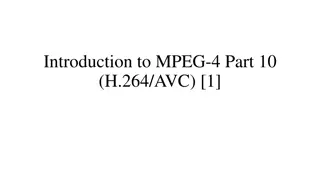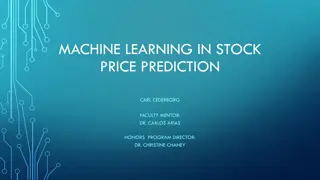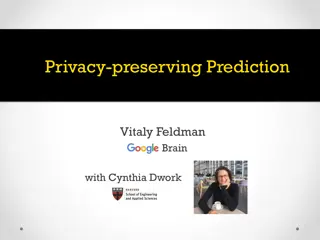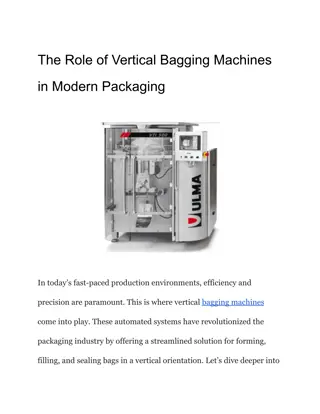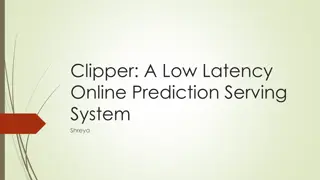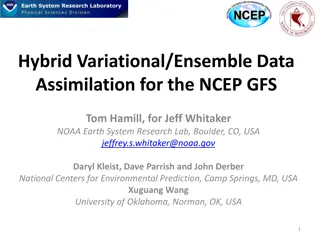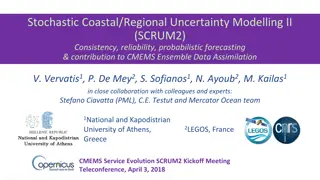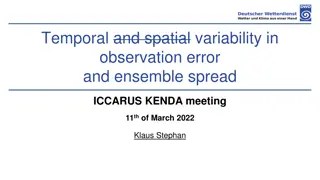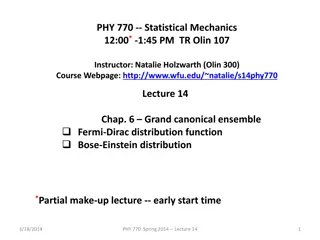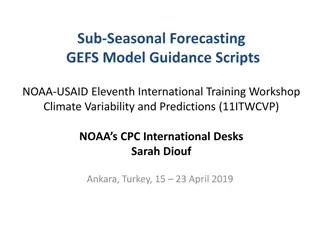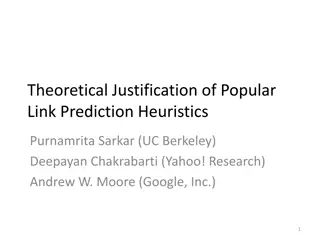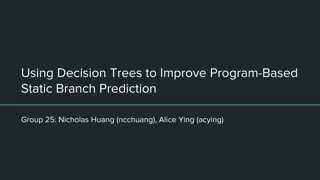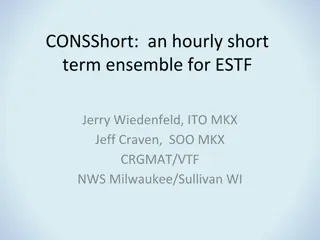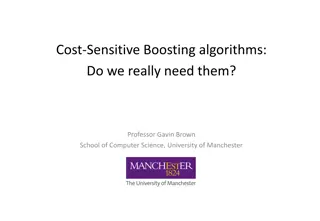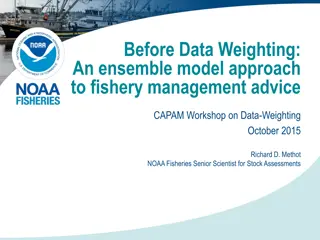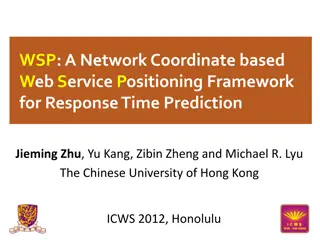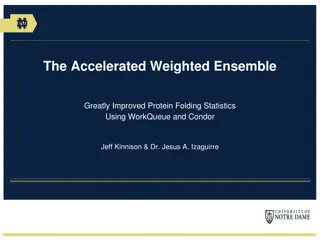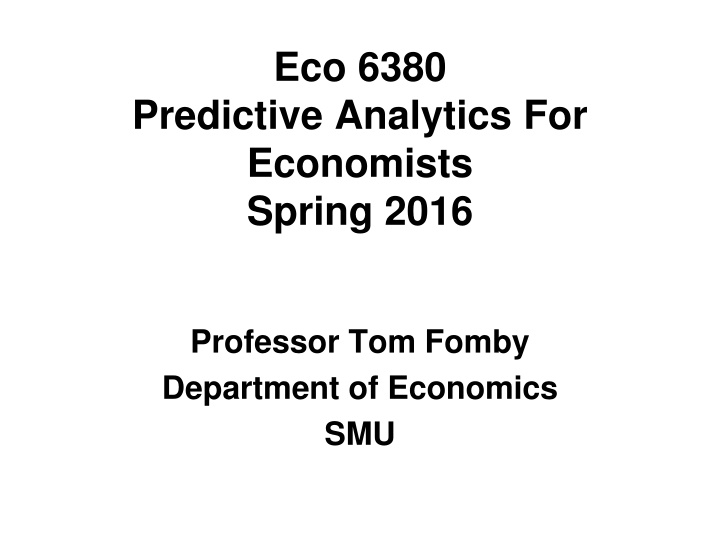
Ensemble Predictive Analytics for Economists: Benefits and Methods
Discover the benefits of combining forecasts in predictive analytics for economists. Learn about ensemble predictions, bagging, boosting, and various methods to improve accuracy in both prediction and classification problems. Explore techniques such as Nelson and Granger-Ramanathan ensembles, along with obtaining weights for ensemble methods. Dive into classification ensembles using the Majority Voting Rule for binary outcomes. Enhance your understanding of predictive analytics with practical insights for Spring 2016 at SMU's Department of Economics.
Download Presentation

Please find below an Image/Link to download the presentation.
The content on the website is provided AS IS for your information and personal use only. It may not be sold, licensed, or shared on other websites without obtaining consent from the author. If you encounter any issues during the download, it is possible that the publisher has removed the file from their server.
You are allowed to download the files provided on this website for personal or commercial use, subject to the condition that they are used lawfully. All files are the property of their respective owners.
The content on the website is provided AS IS for your information and personal use only. It may not be sold, licensed, or shared on other websites without obtaining consent from the author.
E N D
Presentation Transcript
Eco 6380 Predictive Analytics For Economists Spring 2016 Professor Tom Fomby Department of Economics SMU
Presentation 8 Ensemble Predictions, Bagging and Boosting Classroom Notes
Benefits of Combining Forecasts The accuracy of Ensemble (Combination) predictions are usually better (especially if the individual methods making up the ensemble are pre-picked ( trimmed ) and there are not too many of them (rule of thumb: 4 or less) This general result holds in both prediction and classification problems
Ensembles Predictions for Numeric Target Variable Based on M Competing Forecasts (Predictions) Philosophy: Essentially, all models are wrong, but some are useful. G.E.P. Box Philosophy: Don t Put All of your Eggs in One Basket. A well accepted rule in finance and portfolio diversification theory. The Nelson Combination (Ensemble): ??= ?1 ?1+ ?2 ?2+ + ?? 1 ?? 1+ 1 ?1 ?2 ?? 1 ?? Note: Weights add to one. The Granger-Ramanathan Combination (Ensemble): ???= ?0+ ?1 ?1+ ?2 ?2+ + ?? 1 ?? 1+ ?? ?? Note: Weights on forecasts don t necessarily add to one and the intercept, ?0, need not be zero. Good (trimmed) Ensembles are made up of the forecasts derived from the most accurate forecasting models (preferably four or less most accurate models), and at the same time, it is hoped that these best forecasting models have errors that are negatively correlated or at least have minimal correlation between their errors. Correlation Matrix plots of the forecast errors can be helpful in this regard.
Obtaining the Weights for the Ensemble Methods The Nelson Ensemble weights are obtained by regressing the actual values of the target variable in an independent data set on the M forecasts (predictions) of the target variable in the independent data set derived by using the M forecasting (prediction) models. This is a restricted regression in that the intercept has to be set to zero and the weights (coefficients) applied to the forecasts have to be restricted to add to one. The Granger-Ramanathan weights are obtained like in the Nelson method but, instead, the intercept of the regression is not set to zero and the weights (coefficients) applied to the forecasts need not add to one. Some software packages provide the Simple Average Ensemble which is nothing more than the Nelson Ensemble method with each of the forecast weights being 1/M. The Simple Average Ensemble is likely to be less accurate than the more sophisticated Nelson and Granger-Ramanathan Ensemble methods except in cases where the forecasting methods making up the Ensemble are approximately equally accurate.
Classification Ensembles: The Majority Voting Rule In the case that there are M binary classification models predicting either 1 (a success ) or 0 (a failure ), a Majority Voting Rule can be used. If M is odd, then the Majority Voting Ensemble prediction is the outcome that has the majority vote. If M is even and there is a tie vote, a coin flip can be used to break the tie. It is possible to have weighted voting rules with the most accurate classification models carrying greater voting power.
Bagging Prediction and Classification Methods Bagging stands for Bootstrap Aggregation. Prediction and Classification Models are often improved in terms of accuracy of prediction and classification if they are bagged. Take, for example, Multiple Linear Regression (MLR) in the application of predicting a numeric target variable in an independent data set. More accurate prediction of an independent data set might be obtained by picking a set of MLR models obtained by a large number (B) of random, say, 3/4 to 1/4 cross-validations. Let N be the number of observations available to estimate the coefficients of the MLR. Draw N bootstrap observations ( cases ) with replacement. Then randomly choose (3/4)*N observations for the training data set and (1/4)*N observations for the validation data set and obtain 3 MLR models (to the extent they are unique) by the backward, forward, and step-wise selection methods and choose the MLR model that is the most accurate in the validation data set. Repeat this process, B times (maybe B=100). Then invariably one has B MLR models to use to predict a target variable in an independent data set. The Bagged MLR predictions for the independent data set are just the simple average predictions based on the prediction of the B MLR models obtained in the bagging process. In many cases, the Bagged MLR models are more accurate than any one single MLR model obtained from a one-time run of a training/validation estimation of an MLR model. In a similar manner, classification models, like the CART model, can be bagged as well. Such bagging is sometimes called building a Random Forest of decision trees.
Boosting a Model Boosting Combines models of the same type (e.g., decision tree) and is iterative, i.e., a new model is influenced by the performance of the previously built model. If, for example, there are several cases that were very poorly predicted by a CART tree, these cases are given more weight and a second CART tree is fit to the data. This process continues with successive reweighting of tough to classify cases and the building of a succession of trees reflecting the successive reweighting of tough cases. Like Bagging, Boosting of a classifier (or predictor) leads to Majority Voting of classifications or simple averages of predictions across the succession of boosted versions of the given model. The most popular of Boosting Methods is called AdaBoost.M1 For more on AdaBoost.M1 see AdaBoost.M1.pdf.
Now for a Discussion of the Nelson and Granger-Ramanathan Ensemble Methods read the comments in the SAS program combo.sas and run it. The data analyzed is from the article by J.A. Brandt and D.A. Bessler entitled "Price Forecasting and Evaluation: An Application in Agriculture," Journal of Forecasting (July - Sept. 1983), pp. 237-248.


